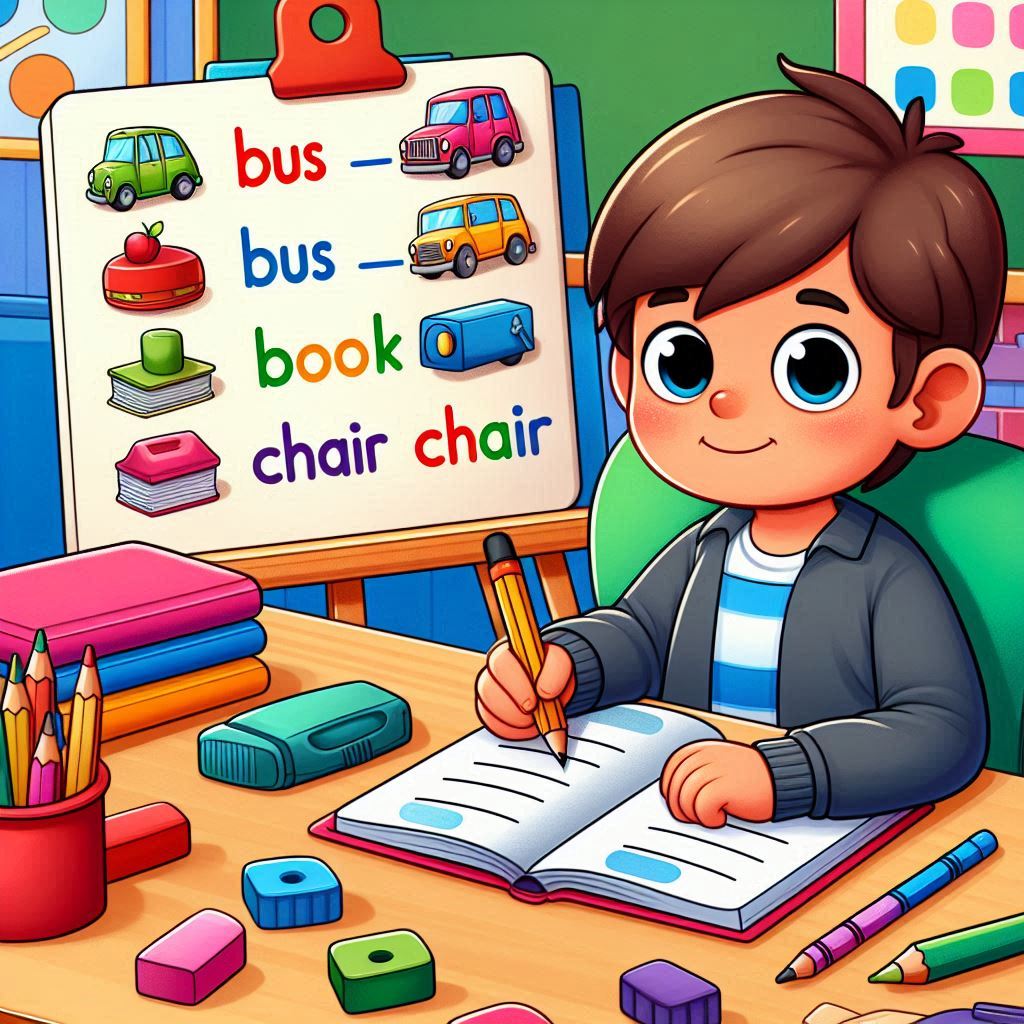Ending Sounds Worksheet

Introduction to Ending Sounds in Phonics
Recognizing ending sounds in words is a key component of phonics and early literacy. It helps children distinguish between similar sounding words and improves both their spelling and pronunciation skills. The Ending Sounds Worksheet offers a fun and interactive way for kids to focus on the final sounds of words like "bus", "book", "pencil", and "chair". Through engaging exercises, children become more aware of how words end, enhancing their overall reading ability.
What is an Ending Sounds Worksheet?
An Ending Sounds Worksheet is an educational activity where children are asked to identify or match the ending sound of a word. This could be by circling the final letter, matching it with a corresponding image, or selecting the correct word from a list. These worksheets often use familiar, everyday words and help build a strong foundation in phonemic awareness — the ability to hear and manipulate the individual sounds in spoken words.
Benefits of the Ending Sounds Worksheet
Practicing ending sounds using worksheets offers multiple learning benefits:
- Enhances Phonemic Awareness: Focuses on the last sound in a word, improving the child’s listening and pronunciation skills.
- Strengthens Spelling Skills: By recognizing how words end, children become better at writing and spelling them correctly.
- Builds Reading Fluency: Understanding the full structure of words boosts reading accuracy and confidence.
- Improves Word Differentiation: Helps distinguish between words that may start similarly but end differently, such as “bus” and “bun.”
- Encourages Independent Learning: Simple and colorful designs motivate children to engage with the worksheet on their own.
How to Use the Ending Sounds Worksheet
This worksheet is suitable for classroom and home use and can be used both digitally and on paper. Here’s a step-by-step guide:
Step 1: Prepare the Worksheet
Use a printed or digital version with a list of simple words and corresponding pictures or ending letters. Words like "book", "bus", "pencil", and "chair" are excellent choices to begin with.
Step 2: Explain the Task
Start by showing a few examples. For instance, point to the word “bus” and emphasize the /s/ sound at the end. Say, “Let’s find which letter makes the last sound in this word.” Encourage the child to repeat the sound after you.
Step 3: Begin the Activity
Children can circle, write, or drag the correct ending letter next to each word. For images, they can match a picture with the word that ends with the corresponding sound. The activity should feel like a game rather than a test.
Step 4: Review the Answers
After the child finishes, go over the worksheet together. Repeat the word, ask about its ending sound, and celebrate correct answers. Mistakes can be learning opportunities with encouraging feedback.
Step 5: Reinforce with Examples
Extend the activity by asking them to think of other words that end with the same sound. For example, after "bus", ask “Can you name another word that ends with /s/?”
Creative Ways to Reinforce Ending Sounds
- Story Time Sound Hunt: Read a short story and ask children to listen for and identify ending sounds in select words.
- Sound Sorting Games: Give children picture cards and ask them to sort them by their ending sounds.
- Rhyme and End: Introduce simple rhyming words that share the same ending sounds to reinforce sound patterns.
- Craft Match Activity: Let children glue pictures on a board under categories like ending in “k”, “s”, or “r”.
Examples of Words for the Worksheet
- Bus → ends with “s”
- Book → ends with “k”
- Pencil → ends with “l”
- Chair → ends with “r”
- Dog → ends with “g”
- Cap → ends with “p”
Why Ending Sounds Matter in Early Literacy
Understanding ending sounds gives children a complete picture of how words are constructed. It's not just the beginning sounds that matter in phonics—every part of the word plays a role. By mastering ending sounds, young readers learn to decode, spell, and speak more clearly. This skill leads to stronger reading fluency and better comprehension as they grow into independent readers.
Conclusion
The Ending Sounds Worksheet is a powerful, engaging tool for helping children identify and master the final sounds in words. Whether used in a classroom or at home, this worksheet builds confidence, sharpens listening skills, and enhances early literacy. By making learning fun and interactive, ending sound practice can be a rewarding part of every child's reading journey.